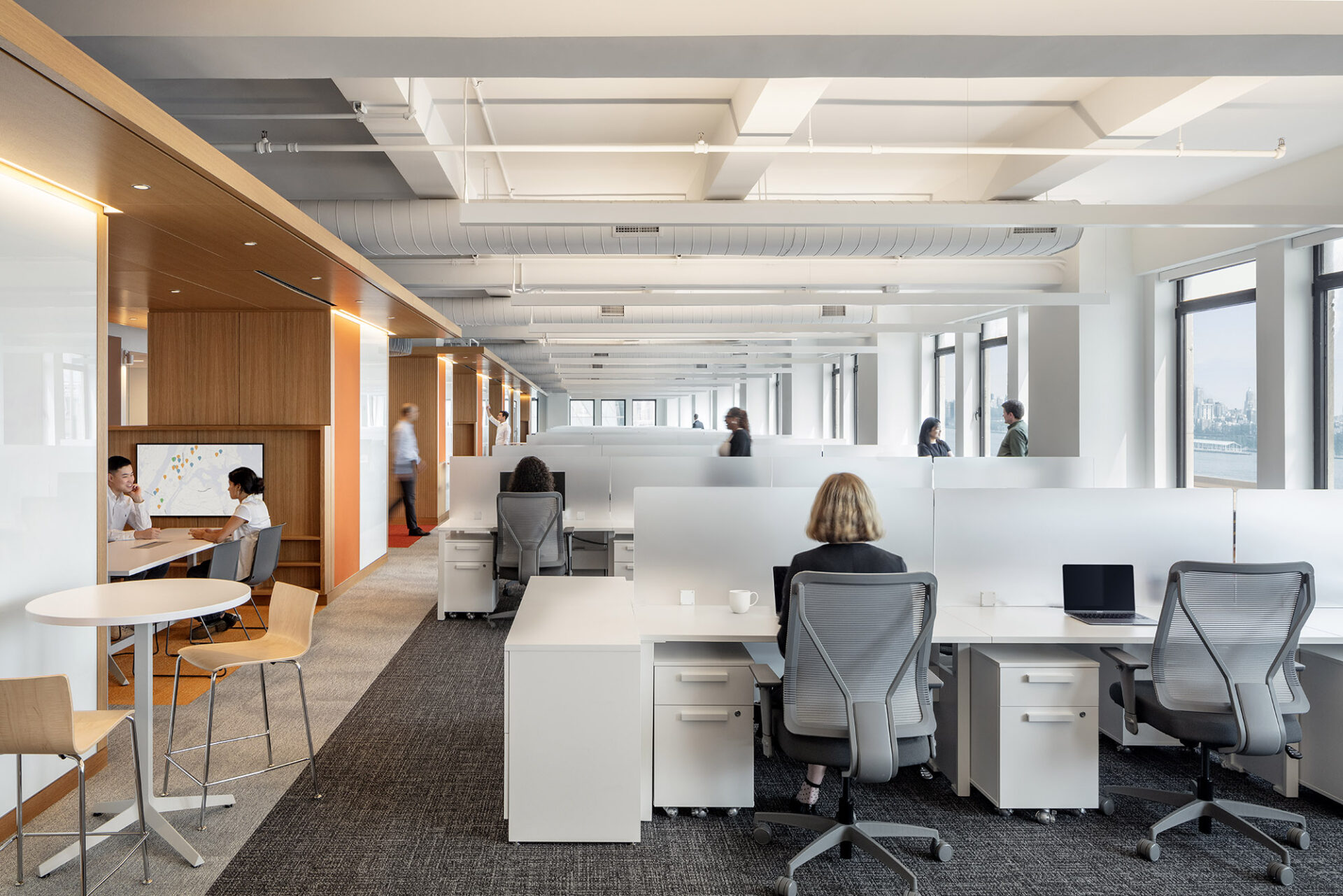Aligning Workspace Design with Team Needs
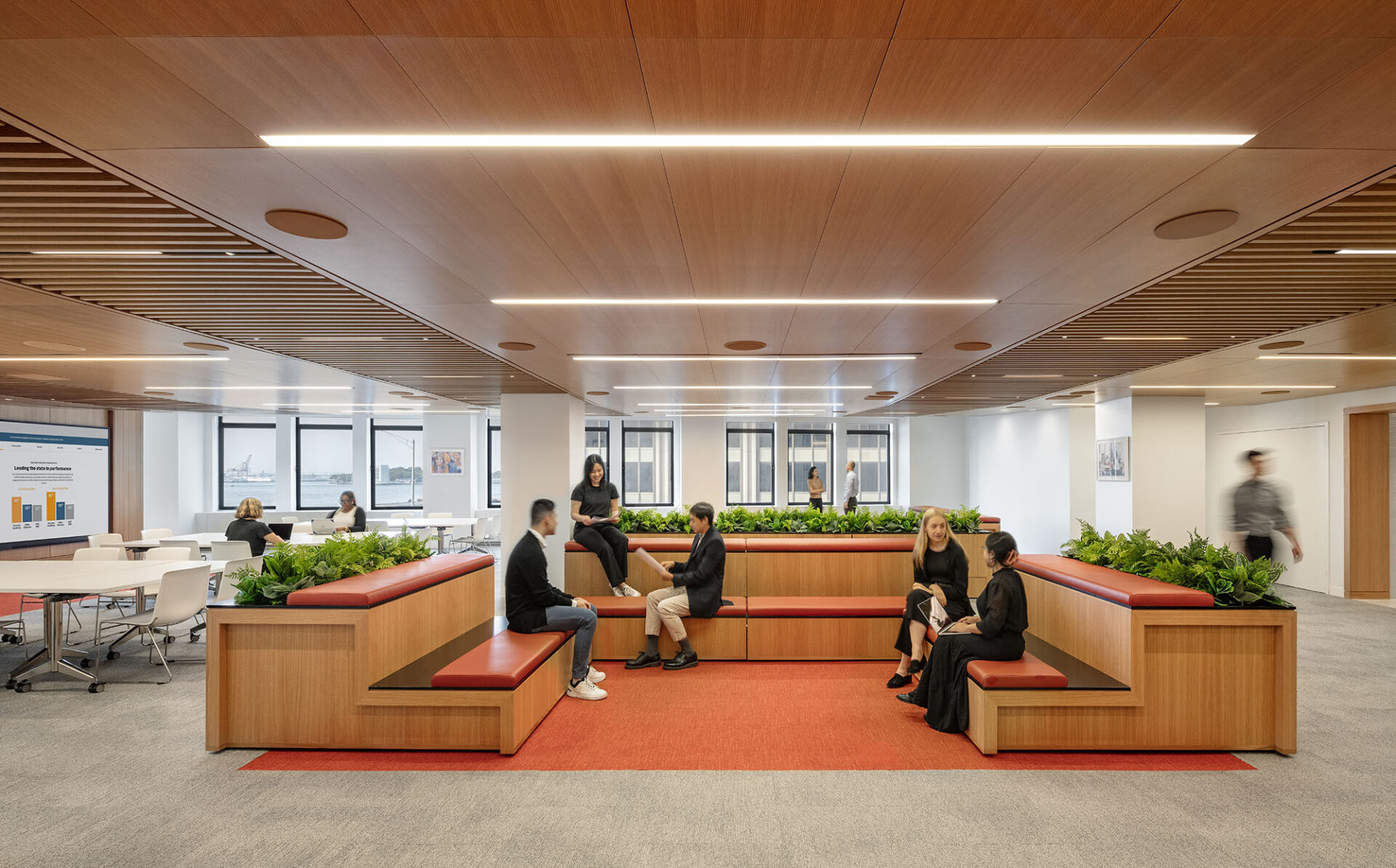
By analyzing how teams use the workplace—and identifying misalignments between space allocation and team needs— MBB redesigned the offices of Success Academy Charter Schools to better support individual focus, small group collaboration, and large team meetings.
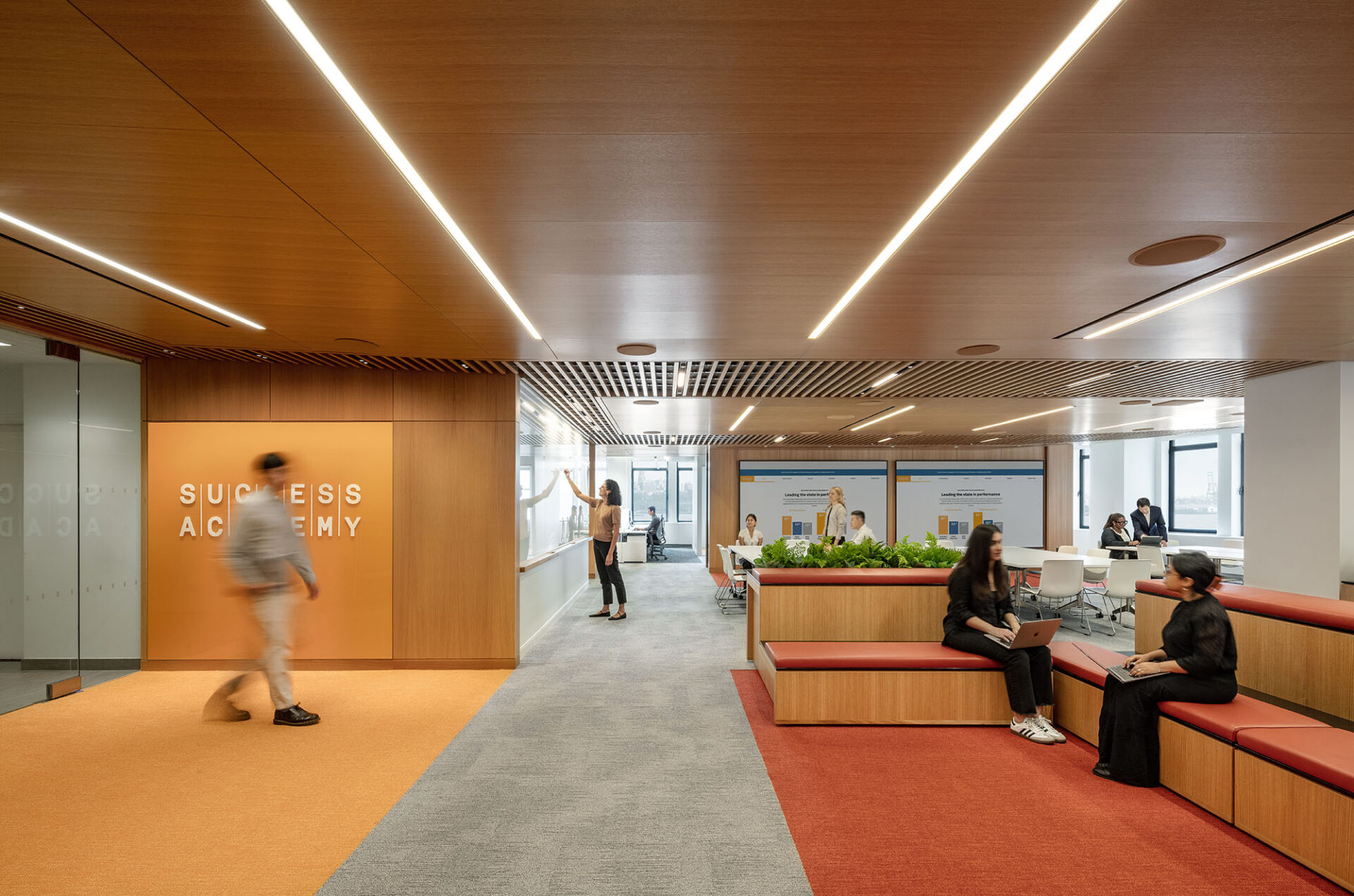
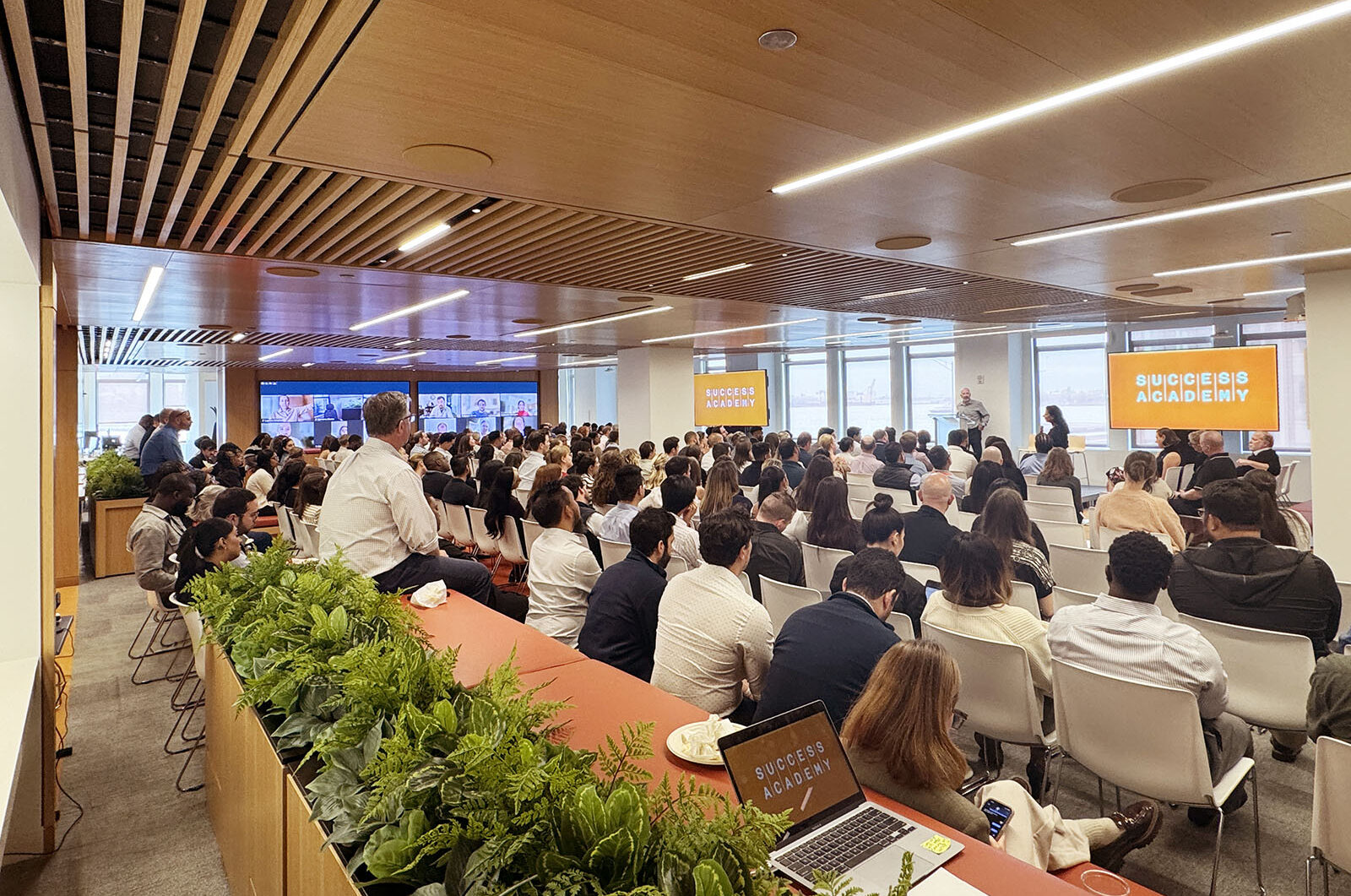
Optimized for Flexible Collaboration
MBB was engaged by Success Academy, a not-for-profit charter school network in New York City, to design an expansion of their Lower Manhattan offices to accommodate their growing team. Responding directly to user needs and organizational objectives, our research-driven approach resulted in efficient yet transformative solutions encompassing 70,000 square feet of workspace on four floors of an Art Deco-era tower. The new spaces are optimized for focus, flexible collaboration, and team impact.
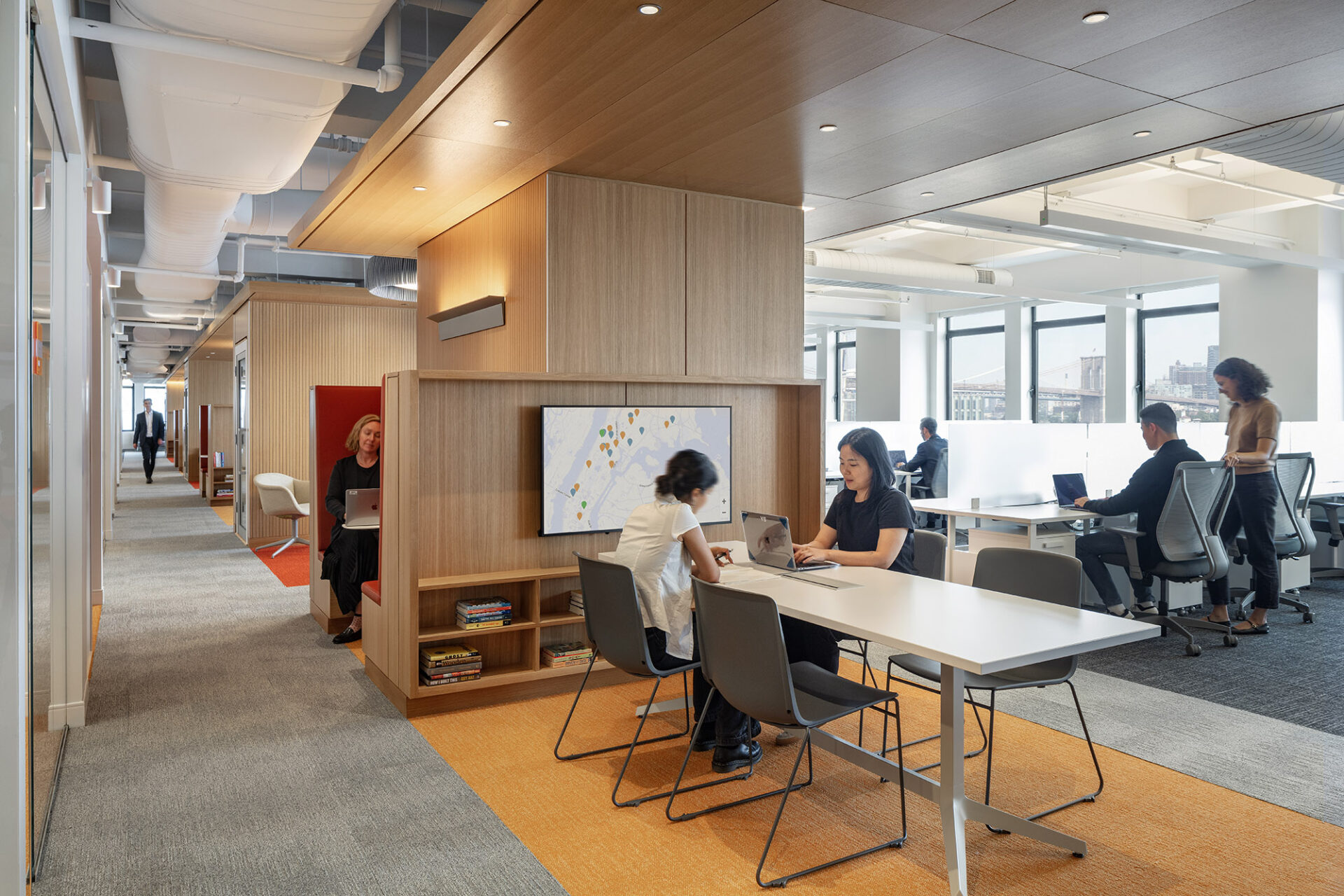

Before the redesign, our program analysis found there was insufficient space for informal collaboration, while large meeting spaces were overburdened by meetings of 2-4 people. Our redesign created a variety of breakout and meeting spaces optimized for individual focus, small group collaboration, and large team meetings.
Data-Driven Programming
Based on a robust stakeholder engagement process including surveys, interviews, observation, and analysis of data from a year’s worth of conference room bookings, we found that employees lacked space for both informal meetings and private calls. The few large conference rooms were perennially overbooked with meetings of 2–4 people, while the open workstations became noisy as people huddled over desks. To empower employees to work more effectively—and more enjoyably—we increased both the variety and quantity of spaces available for informal “fast feedback” meetings and private calls. This, in turn, ensured that people can focus at their personal workstation, while larger groups have suitable meeting spaces available. We also designed new executive office suites which, like the open workstations, take advantage of stunning views of the harbor and the Brooklyn Bridge.
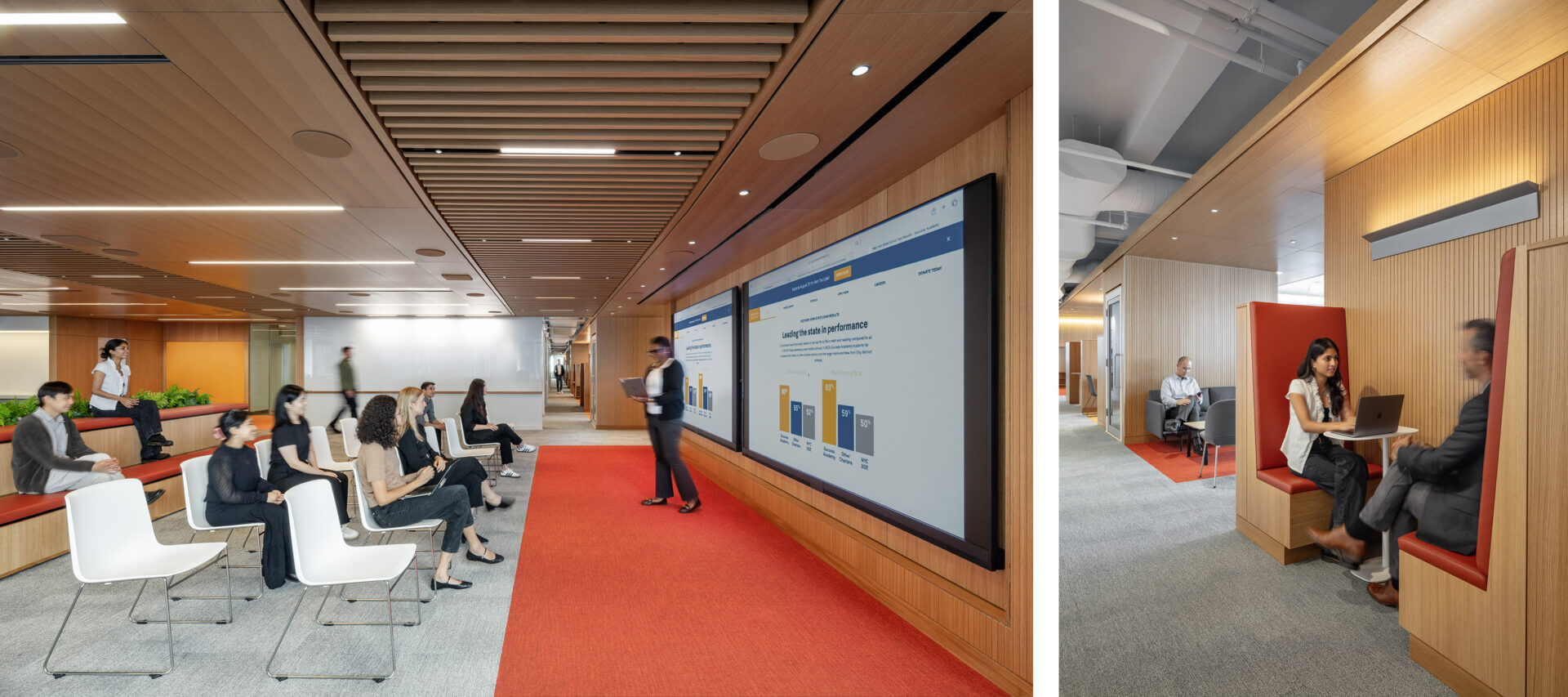
Network Spine
The centerpiece of our intervention on each floor is the ‘network spine,’ a sequence of informal breakout spaces built around an existing row of structural columns. Lounges, banquette nooks, whiteboards, two- and four-seat tables, and soundproof phone/teleconference booths unfurl in a continuous band running between the daylit workstations on one side, and glass-enclosed private offices on the other. These welcoming, multi-faceted hubs—serving 150 to 200 employees on each floor—are defined by acoustically treated wood to control ambient noise. Individualized lighting controls enable employees to change the environment to suit their sensory preferences.

Flexible Gathering Space
A large open space on the fourth floor accommodates up to 240 people for gatherings. Equipped with movable furniture, an acoustic wood ceiling, and audio/video infrastructure to support digital presentations and hybrid meetings, it serves on most days as a ‘touch down’ space suited to impromptu meetings or presentations for 30 to 60 people. Custom-designed, tiered bench seating units on casters can be rolled to different positions—part of our design strategy to maximize flexibility and optimize the workspace for team needs.
Photos © Magda Biernat

